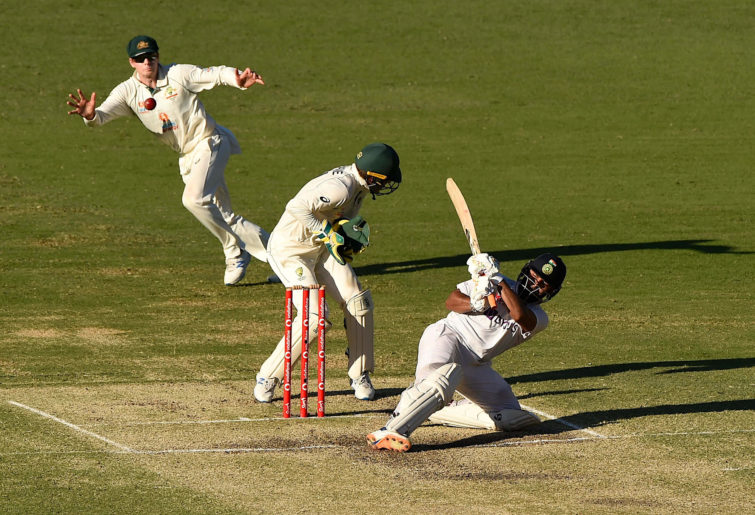Aussies leapfrog India in rankings despite neither team playing, Starc returns to form in IPL
Australia have reclaimed top spot in the ICC's Test rankings, replacing India. Despite not playing since winning 2-0 in New Zealand in March, Pat…
Opinion
“To be natural is such a very difficult pose to keep up,” once wrote the renowned Irish poet and playwright, Oscar Wilde, who even went on to serve a sentence for being too authentic.
His masterpiece The Picture of Dorian Gray was deemed sinful and perverse by the literary circles of that era, and he was often ridiculed for his contrary views and sexuality. That was in 1890, when society was built on the pillars of conformism and conservatism.
The world we inhabit now is modern, progressive and tolerant. But the room for experimentation in any discipline hasn’t expanded in a proportion it should have.
There are certain socially acceptable ways of doing things, and any deviation from those ways will raise too many eyebrows. For instance, in Test cricket, there are certain tacit norms and strategies for batting which players are supposed to abide by.
Even though this is a format where cricketers have no dearth of time to try out their new weapons, most of them reserve it for a shorter, market-friendly format. There’s one note, one tune, one tempo, one rhythm to build up a game.
Play every ball on its merit. Play every ball as it comes. No premeditation.
At this point, enter Cheteshwar Pujara and Rishabh Pant.
They are miles apart in their persona, their methods are as contrasting as the relationship between bourgeois and proletariat in the Marxist economy, and nothing links the two except a shade of stubbornness.
Prevail or perish, both Pant and Pujara are known for being ridiculously stubborn to their natural game.

Cheteshwar Pujara avoids a bouncer from Pat Cummins. (Photo by Patrick HAMILTON / AFP)
Pujara is often accused of slowing down things. He constructs his innings like a stoned musician composes his 60-minutes album for his solo doom metal project, and this irks viewers, who are always short of time.
Pant, on the other hand, is a punk aficionado whose style is an anti-thesis to Test batting. He is often accused of being too reckless, too anarchic and even immature at times.
Both these batsmen play a game that has left the fans divided sharply and this is where the beauty of Test cricket lies: it allows space and time for the manifestation of both Pujara’s stoicism and Pant’s flamboyance, and that too at the same time.
If not for that crucial Pujara-Pant partnership in Sydney – 148 runs from 43.3 overs – India might have headed to Brisbane with a 2-1 deficit.
Pujara stonewalled the rage and fury of the opposition’s attack with surgical precision and contributed 24 off 106 balls, while Pant slammed a marvellous 97 which came off just 118 balls. At one point it looked like India might pull out an unlikely heist, but that glimmer of hope dimmed when Pant fell to Nathan Lyon’s trap.
If Pujara is an embodiment of resistance, Pant is the harbinger of unrealistic fantasy but which relies on the assurance the former provides to the batting unit.
It’s not that these two batsmen don’t have a life of their own, rather, both have spent a major portion of their career in the absence of each other, but it’s their union that skyrockets the potency of this Indian batting line-up. And the decisive victory in Brisbane was a testament to that.

Rishabh Pant. (Photo by Matt Roberts/Getty Images)
On day five at the Gabba, where the lively pitch from day one had deteriorated into a dark, brown carcass with deep cuts in between which the Australian pace-attack were going to use to their advantage, all hopes of rescuing the team from choppy waters were once again pinned on Pujara’s shoulders.
He came to the crease in the morning, endured everything thrown his way with a presumptuous resilence and didn’t walk back before tilting the balance of power away from the home side.
From the first 100 balls he faced, Pujara accumulated just 11 runs, but did his part to blunt the incisiveness of the Australian attack, especially that of Mitchell Starc.
Pujara metamorphosised himself into an unshakeable rocky phenomenon who stood resolutely between the visitors and their second and decisive victory. He took eleven blows on his body and still stood unflustered until one of the aforementioned cracks combined with Pat Cummins’ dexterity to get the better of him.
Pujara single-handedly played over 35 overs and by the time he got out, India needed just 20 overs to survive. His resilience has almost eliminated losing from the possible set of outcomes by then.
Now it was all between winning or playing for a draw, and much of it depended on how Rishabh Pant manoeuvres his innings. In Pant’s world, shutting shop is never an option and thus, he started the onslaught.
He played elegant drives, pulled Hazlewood with incredible ease, scooped Nathan Lyon with arrogance and followed it with a slog-sweep to aggravate the misery of the off-spinner and the hosts.
It was only fitting that Pant wrote the epilogue of Australia’s diary with a picturesque straight drive off Josh Hazlewood that saw the injury-ridden India become the first side in 32 years to secure a Test victory at Gabba.
And while the whole cricketing world immersed in Pant’s immensity, not a single soul would refute that his tower of flamboyance was built on a substructure whose foundation was laid by none other but Cheteshwar Pujara.
Their collective success reinforces that there’s no single way of achieving a target, for all that matters is the destination, not the route one takes to reach it.